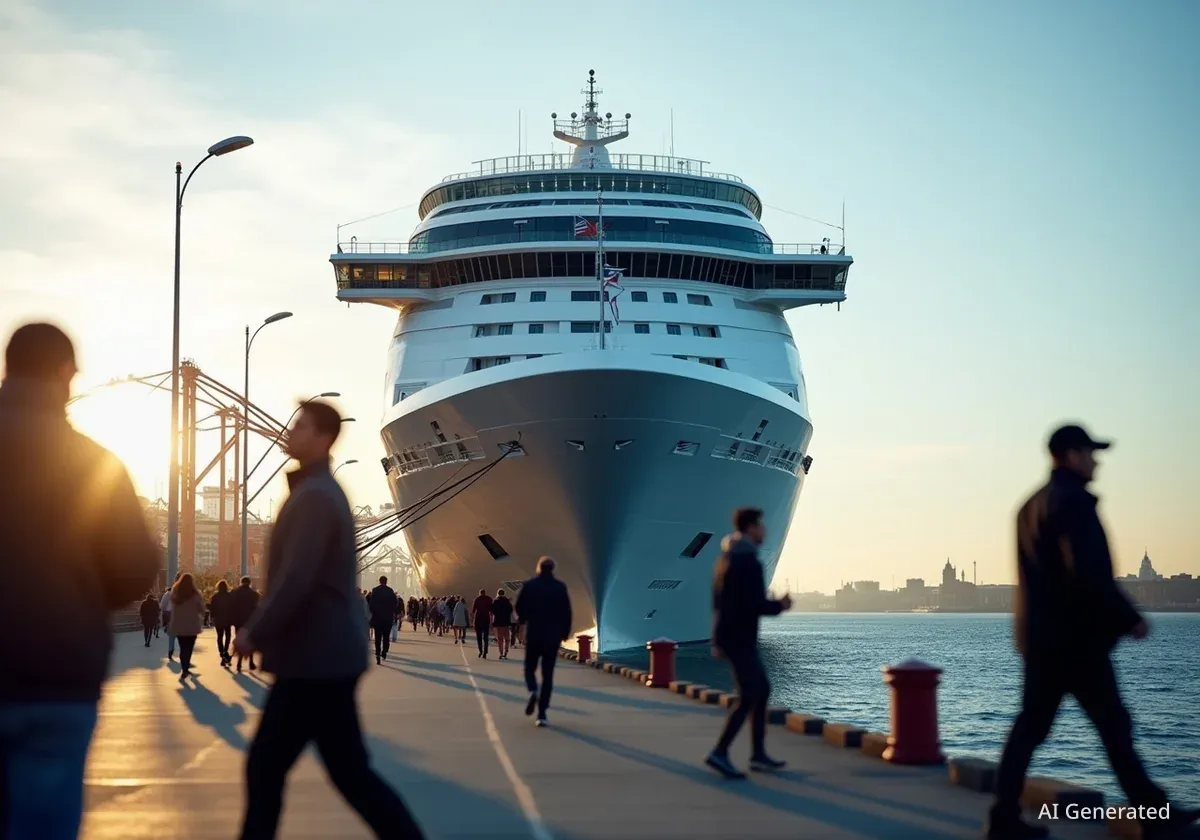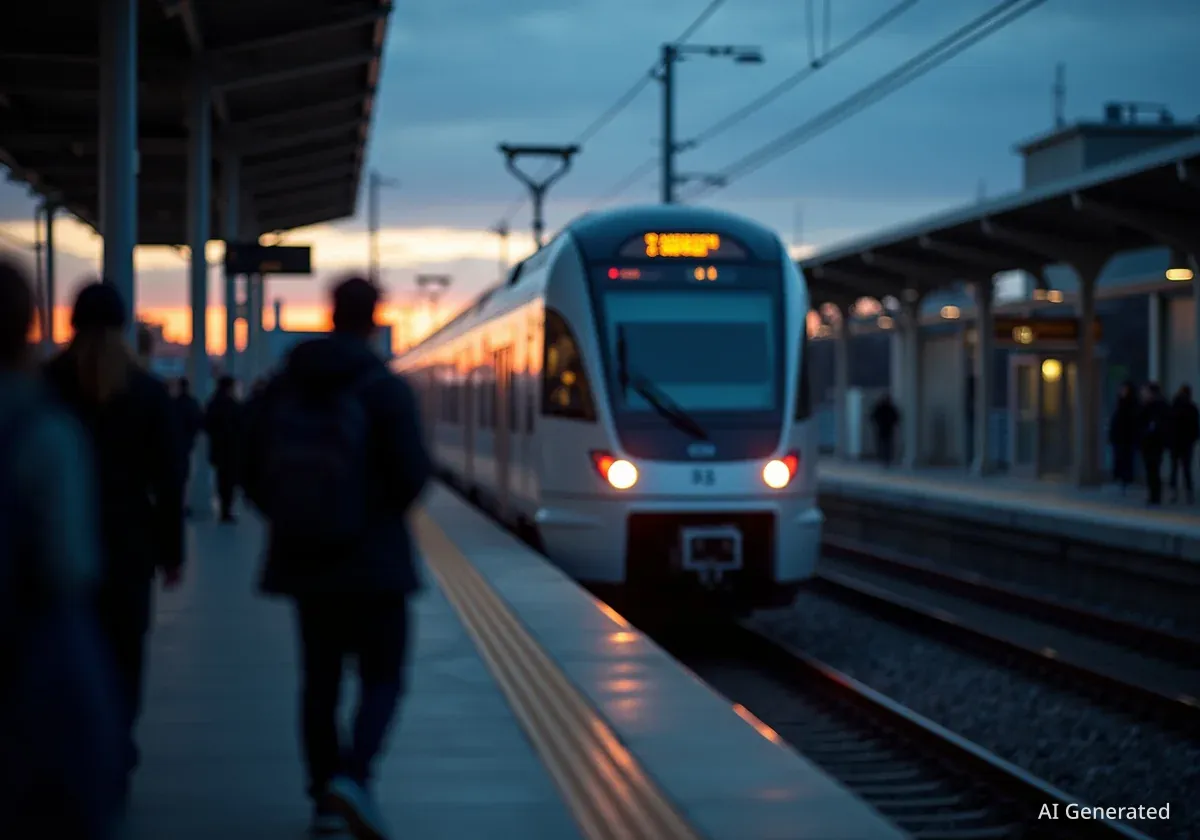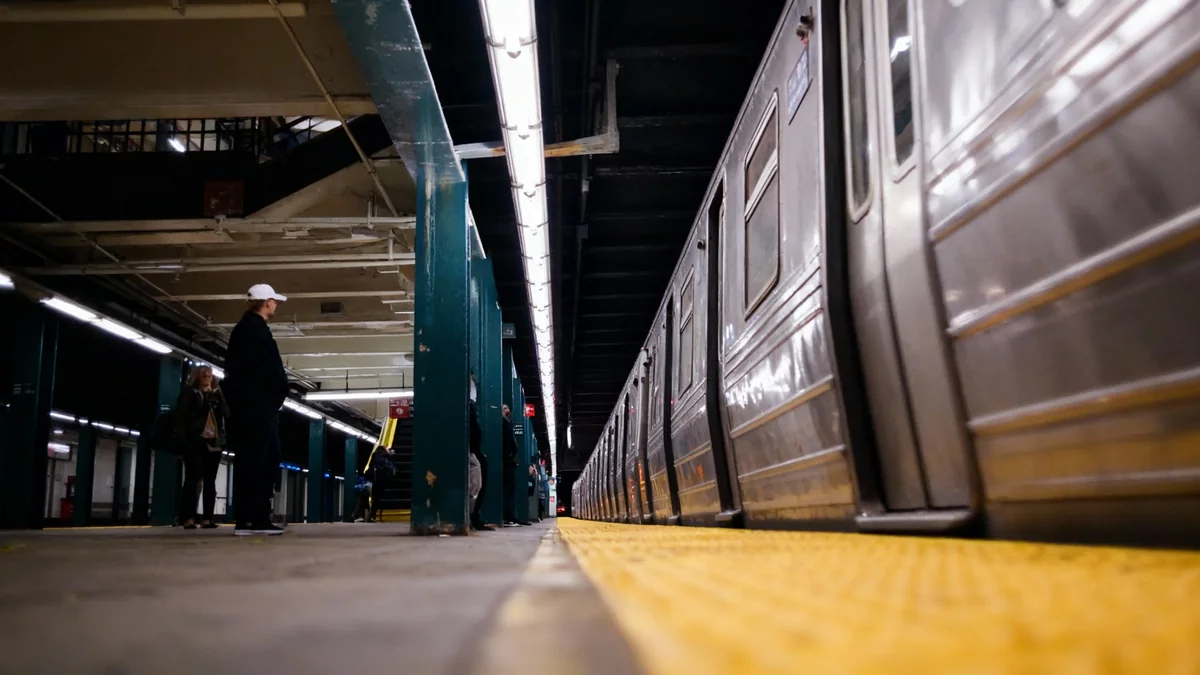New York state officials have initiated the environmental review process for the Interborough Express (IBX), a proposed $5.5 billion light rail line designed to connect Brooklyn and Queens. This critical step moves the 14-mile transit project, which aims to serve 160,000 daily riders, closer to construction.
Key Takeaways
- The Interborough Express (IBX) project has officially entered its environmental review phase, a mandatory step before construction can begin.
- The proposed 14-mile light rail line will run from Bay Ridge, Brooklyn, to Jackson Heights, Queens, primarily using an existing freight rail corridor.
- With a projected cost of $5.5 billion, the IBX is expected to provide service for approximately 160,000 riders each day.
- The project will connect to 17 subway lines and create a direct transit option between the two boroughs, bypassing Manhattan.
- The MTA has scheduled public meetings in October and November 2025 for community feedback on the project.
A Major Step for a New Brooklyn-Queens Transit Link
Governor Kathy Hochul announced that the long-planned Interborough Express can now proceed with a formal environmental review. This marks a significant milestone for the transit proposal, which intends to establish a direct light rail connection between Bay Ridge in Brooklyn and Jackson Heights in Queens.
The project will utilize a 14-mile stretch of an underused freight railway. Officials estimate the new line will dramatically reduce travel times between the outer boroughs, with an end-to-end trip taking approximately 32 minutes.
Bypassing Manhattan
A primary goal of the IBX is to address a long-standing gap in New York City's transit network. Currently, most travel between Brooklyn and Queens requires a detour through Manhattan. The IBX would provide a direct, efficient route for commuters and residents traveling between the two boroughs.
Understanding the Environmental Review Process
The environmental review is a mandatory procedure under the New York State Environmental Quality Review Act. This law requires government agencies to evaluate the potential environmental effects of major projects before they are approved.
The review will produce a detailed environmental impact statement, which assesses factors such as noise, air quality, and community disruption. It also considers the project's social and economic benefits. The process, which typically takes about two years to complete, includes opportunities for public input.
"It’s that last step before you actually start putting things in the ground, before you start digging and building," said Blair Lorenzo, executive director of the Effective Transit Alliance.
Project Scope and Community Impact
The IBX is designed to integrate seamlessly with the city's existing transit system. The proposed route includes connections to 17 different subway lines, 50 bus routes, and two Long Island Rail Road stations, creating a new hub of connectivity.
According to the MTA, the project is expected to bring significant economic opportunities to the nearly 900,000 people who live within a half-mile of the proposed route. The transit authority also noted that more than one-third of residents in this corridor live below the federal poverty line, highlighting the project's potential to serve transit-dependent communities.
By the Numbers: The Interborough Express
- Cost: $5.5 billion
- Length: 14 miles
- Daily Ridership (Est.): 160,000
- Travel Time (End-to-End): 32 minutes
- Connections: 17 subway lines, 50 bus routes, 2 LIRR stations
Funding and Next Steps
The MTA has already allocated a significant portion of the necessary funds for the project. A sum of $2.75 billion has been set aside for design and engineering work within the MTA’s $68.4 billion capital plan for 2025–2029.
Blair Lorenzo of the Effective Transit Alliance noted the state's commitment to the project, pointing out that the environmental review is proceeding without a federal funding guarantee. This indicates a strong local desire to advance the project regardless of national political circumstances.
"The fact that they are doing it without any federal guarantee right now is, I think, a good sign of how committed they are," Lorenzo stated. Preliminary design and engineering work will run concurrently with the environmental review.
Public Involvement and Meetings
The MTA is actively seeking public feedback during the environmental review phase. The authority has scheduled several public meetings where residents can learn more about the project and provide comments, either in person or online.
The scheduled meetings are as follows:
- October 29, 2025: 5:30 p.m. to 8 p.m. at the Brooklyn College Auditorium.
- November 6, 2025: 5:30 p.m. to 8 p.m. at Christ the King High School Auditorium in Middle Village.
- November 12, 2025: Two online sessions via Zoom, from 10 a.m. to 12 p.m. and 6 p.m. to 8 p.m.
Once the design and review processes are complete, the MTA plans to award a construction contract to begin physical work on the new light rail line.





